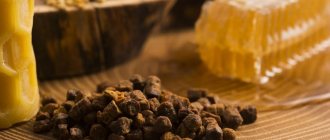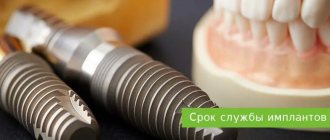Tincture of calamus and propolis for teeth and gums was proposed by Academician B.V. Bolotov. In his writings, he noted its effectiveness and ability to cope with many oral diseases even in advanced stages.
Before starting to use recipes and products containing beekeeping products, be sure to consult a doctor who, based on tests and examination, will determine the advisability of using such products and prescribe a course and dosage.
What are adhesions in gynecology
Adhesive disease of the pelvic organs in women is a complication after which fibrinous connective tissue grows between the pelvic and abdominal organs.
In this way, the body tries to protect the source of inflammation - due to excess tissue, the fallopian tubes, uterus, ovary and intestinal loops stick together, pull tightly together, which disrupts their functions. Adhesive processes can be of several types, depending on the “neglect”:
- Formation of single thin adhesions (synechia).
- Synechiae become denser, covering up to 50% of the surface of the ovary.
- The adhesions are dense and numerous, changing the position of organs or causing their deformation.
Adhesions cause pain and disturbances in the functioning of the pelvic organs. They appear after gynecological diseases or operations and can lead to serious complications: ectopic pregnancy, infertility, frequent inflammation and more.
To prevent the occurrence of adhesions, avoid complications and prescribe competent treatment, make an appointment with the doctors of the Doctor A clinic. We employ gynecologists of the first and highest qualification categories
How to use calamus to treat gums?
Recipe for a decoction for rinsing gums with calamus root
This decoction is effective for all forms of periodontal disease:
- The rhizome is crushed and brewed with slightly cooled boiling water. The product is brought to a boil again and infused for about 15 minutes.
- The strained and cooled decoction is used for rinsing the mouth.
- The intensity of the procedures is 2-3 times daily for a month.
Alcohol tincture of calamus for gums
Recipe:
- To prepare an effective drug, you need to purchase calamus rhizome.
- Dry raw materials are crushed and filled with alcohol. It is recommended to keep the proportions 1:5.
- The product is infused in a dark place for at least seven days and is used for healing applications.
- The intensity of treatment procedures is 2-3 times weekly for one and a half months.
- To carry out the manipulations, you will need a sterile gauze turunda, which is soaked in tincture and applied to the affected area for 10-15 minutes.
- After the procedure, the pain disappears and the damaged tissues heal quickly.
What causes adhesions to form in the pelvis
Inflammation of the pelvic organs. The disease is diagnosed in women who have suffered acute inflammation or suffer from chronic:
- colpitis;
- endometritis;
- andexite;
- parametritis and other diseases.
Operations. Adhesive disease appears in 16% of those operated for the first time and in 96% of women after the third operation. The percentage is high for laparotomy operations:
- appendectomy;
- C-section;
- removal of appendages;
- hysterectomy;
- supravaginal amputation.
Pelvic hemorrhages. The trigger is ovarian apoplexy, bleeding due to a ruptured tube during an ectopic pregnancy.
Endometriosis. The formation of fibrinous ties is provoked by endometrioid growths, which spread to the organs and peritoneum of the pelvis.
Pelvic injuries. Open and closed damage after accidents, falls from a height received at work are one of the reasons for the appearance of adhesions.
Predisposing factors. The occurrence and development of the disease is influenced by:
- invasive gynecological interventions;
- promiscuous sex life;
- late visit to the clinic.
Information about calamus
Common calamus (from Latin Ácorus cálamus) is also called marsh or reed calamus. Belongs to the perennial calamus family. The plant can be found near coastal waters and swamps. Grows on a massive scale in Southeast Asia, North America, Russia, and Europe. In our country, calamus can most often be found in Southern Siberia, the Far East and the European part.
According to scientists, the homeland of calamus is China and India. But since ancient times, thanks to man, the plant was known throughout Asia. The spread of this species was determined by the fact that it grows on the banks of reservoirs, the water of which is suitable for drinking. Therefore, nomadic tribes, traveling, scattered rhizomes by overcoming water and swampy barriers.
The plant came to Russia in the 12th-13th centuries. It was brought by Tatar tribes. They were sure that calamus roots purify water in reservoirs, which becomes suitable for consumption. In order to drink water from an unknown river, the Tatars always carried a calamus root with them and added it to their drink. Calamus has a subtle spicy aroma. It was used as a replacement for bay leaf, cinnamon, and ginger root. The root is used in medicine.
Adhesions in gynecology: symptoms
The adhesive process can be both acute and chronic, or have a periodic nature (with periodic exacerbation of symptoms). Often, women do not notice any symptoms of adhesions in the pelvis, and the disease is discovered only when examining the possible causes of infertility.
Signs of adhesions in the pelvic cavity:
- Painful sensations in the lower abdomen, lower back, above the pubis or in the sacral area;
- Discomfort during physical activity, before menstruation, after stressful situations;
- Pain during sexual intercourse or urination;
- Intestinal disorders: diarrhea, constipation, flatulence;
- Periodic attacks of nausea and vomiting.
Symptoms may worsen when consuming foods that increase gas formation.
Chemical characteristics
The rich composition of this perennial plant allows you to cure diseases of teeth and gums. The ancient Greeks and Romans already knew that calamus helps with toothache and bleeding gums. The rhizome contains:
- complex essential aromatic oils;
- tannins;
- phytoncides;
- starch;
- organic acids;
- tannins;
- resins;
- ascorbic acid;
- palmitic acid;
- iodine;
- aromatic azarinaldehyde;
- macro and micro elements;
- vitamins.
Calamus oil appears as a yellow or light brown liquid. The oil tastes spicy-bitter and smells like a lava leaf. Rhizomes have wound-healing, soothing, and disinfectant effects. In addition, the root can produce an analgesic effect.
Diagnosis of the disease
Diagnosis of adhesions in the pelvis is carried out using various studies:
- Diagnostic laparoscopy. This method can most accurately see adhesions and assess the severity of the process. Diagnosis is carried out under local (or general) anesthesia; a small incision is made through which a camera is inserted.
- Ultrasound of the pelvic organs;
- Hysterosalpingography (performed using X-rays or ultrasound and contrast agents);
- MRI of the pelvic organs.
The necessary examination (or set of examinations) will be prescribed to you by your attending physician.
Calamus root contraindications and side effects
Calamus is unique in its composition and very useful, but there are also contraindications. Proper application and use in the right proportion will give many advantages, while careless use will only harm the body. The medicinal properties are obvious, but it is worth taking into account under what circumstances the use is not permissible:
- intolerance at the individual level;
- allergic reactions;
- period of pregnancy and breastfeeding;
- low blood pressure, since calamus can lower it even further and also reduce the heart rate;
- presence of bleeding of any category;
- kidney ailments.
Neglecting the dosage and rules of administration can cause hallucinations and vomiting. This is primarily due to the strong medicinal qualities of the herbal preparation. This herb requires constant monitoring, and it is best to consult with a therapist or specialist who will give recommendations and examine the patient’s condition. Doctors do not recommend using calamus in tandem with sedatives, as this can cause more disastrous consequences.
How to treat adhesions in the pelvis
What to do if adhesions are found in the pelvis? Depending on the severity of the adhesive process, the doctor will select the appropriate treatment for you.
To treat single thin adhesions in the pelvis in women, drug therapy is used. What is usually prescribed:
- Antibiotics and antimicrobial agents (to relieve inflammation);
- Non-steroidal anti-inflammatory drugs (as a pain reliever);
- Fibrinolytic agents (for resorption of adhesions);
- Vitamins and immune system regulators (to restore immune balance);
- Hormonal drugs (in cases where adhesions are caused by endometriosis).
Additionally, physiotherapy, balneotherapy and mud therapy may be prescribed as auxiliary measures.
In more severe forms of adhesive disease, a surgical method is used to treat adhesions in the pelvis, i.e. their dissection. The most gentle surgical procedure is manipulative laparoscopy. To prevent re-formation of adhesions, hyaluronic acid is injected into the surgical area.
Useful properties of the composition for dental treatment
The tincture is effective due to the components it contains. Calamus is an evergreen herbaceous plant with pronounced disinfectant properties. The roots are used as medicinal raw materials. They contain vitamins, microelements, fatty acids, antioxidants, tannins, and essential oils.
Even in ancient times, crushed rhizomes were used to treat purulent wounds and ulcers on the body. Today, calamus is deservedly considered one of the best plants for the prevention and treatment of oral diseases, since:
- has an astringent, disinfecting, anti-inflammatory effect;
- effectively heals ulcers and wounds that appear due to stomatitis;
- relieves bad breath, strengthens teeth during periodontitis;
- eliminates bleeding gums.
The property of calamus is known to be “sealing” the tooth. Regular use of tincture or powder stops the carious process.
Propolis is a traditional beekeeping product. It is rich in flavonoids, resins, tannins, aromatic acids, minerals, enzymes, vitamins A, E, C.
Propolis is actively used to treat wounds, ulcers, and prevent many skin diseases. Bee products are good for teeth because:
- soothes, relieves inflammation and pain;
- reduces sensitivity;
- accelerates the healing of damaged gums;
- destroys germs and prevents the spread of infection;
- removes pus.
Is it possible to get pregnant during adhesions?
Adhesions disrupt the proper functionality of the reproductive organs, which greatly reduces the chance of getting pregnant. There is a chance of pregnancy and its successful gestation, especially in cases where the adhesive process affected only one tube. But the likelihood of conception decreases, and the risk of ectopic pregnancy and miscarriage also increases.
In this case, IVF may help. The fallopian tubes are not involved in such fertilization, and a 3-5-day-old embryo is immediately implanted into the uterine cavity.
Features of application
For dental diseases, mix each tincture in a 50:50 ratio. Take 2 tablespoons of the prepared solution and rinse your mouth for at least two minutes. With daily use, the pain goes away after 3-5 days.
To eliminate the bitter taste of the tincture, you can add 1 tablespoon of water to the prepared recipe.
After rinsing, the mixture is not swallowed, but spat out, as pathogenic bacteria have accumulated in it. It is recommended to rinse before going to bed, as well as when pain occurs, to achieve an anesthetic effect.
After using the product, ulcers located inside the teeth may open on the gums. After the pus comes out, the gums will become healthy again. It is recommended to use the tincture daily for a month.
For children
Calamus and propolis are used with caution for dental treatment in children, as allergic reactions are possible. When rinsing with alcohol-based products, care must be taken to ensure that the child does not accidentally swallow it.
Any home remedy for a child must first of all be approved by a pediatrician, who will determine the course and dosage, as well as the advisability of using the remedy.
For small children, to relieve pain when teething, it is better to prepare decoctions of calamus and propolis in water. They can be stored for no longer than three days. Tampons soaked in the broth are applied to the gums.
During pregnancy and lactation
Pregnant women and nursing mothers can use the tincture as a mouth rinse, but care must be taken to ensure that the product does not get inside.
Alcohol penetrates the placental barrier and into breast milk, which can negatively affect the baby’s condition. To eliminate pain, it is better to use water tinctures of calamus and propolis.
For children and women during pregnancy and breastfeeding, it is safer to use a zabrus (honey seal) for problems with teeth and gums.
Prevention of adhesions
For the prevention and treatment of adhesions, enzyme preparations based on hyaluronidase are used. Perhaps the most popular drug for the treatment of adhesions in gynecology is Longidaza suppositories.
Prevention is mostly aimed at preventing relapses of the disease or before an upcoming operation (since adhesions often appear after them).
Remember that the best prevention is regular visits to the doctor and timely diagnosis. Don’t delay until later and sign up for a pelvic ultrasound or a consultation with a gynecologist.
If you feel acute pain in the abdominal cavity or pelvic organs, do not delay visiting a doctor - prevent the development of the disease. Doctors at the Doctor A clinic will conduct an expert examination and prescribe competent treatment. Call or make an appointment online.
Editor's comment
I would like to say the following on my own behalf. The tincture is quite hot, you need to be patient a little at the beginning of rinsing.
Instead of preparing propolis tincture, I use a ready-made one from a pharmacy (30-50 rubles per bottle).
I use two 25 ml bottles per 0.5 liter of tincture of calamus rhizomes. I first strain the tincture from the roots and mix everything together. I think it's not critical. Although, it is probably preferable to prepare propolis tincture yourself.
As for the growth of new teeth, of course, it’s hard to believe, but to strengthen the health of teeth, the teeth themselves can be very suitable.
I recommend using tinctures when a tooth hurts and for prevention.
If you make powder from eggshells, first remove the thin film from them. Otherwise, it will go rotten and will smell unpleasant for some time. By the way, I read that it is recommended to use the powder with a small amount of lemon juice for better absorption.
Traditional medicine: Wiki: Calamus
- Air (1)
- Collection and preparation of calamus (1.1)
- Useful properties of calamus (1.2)
- Chemical composition of calamus (1.3)
- Application of calamus (1.4)
- Calamus root (1.5)
- Calamus flowers (1.6)
- Calamus marsh (1.7)
- Calamus recipes (1.8)
- Calamus tincture (1.9)
- Calamus during menopause (1.10)
- Calamus for sore throat (1.11)
- Calamus for teeth (1.12)
- Calamus oil (1.13)
- Calamus infusion (1.14)
- Calamus root decoction (1.15)
- Contraindications to the use of calamus (1.16)
Botanical description of the marsh calamus
The marsh calamus is a tall perennial herbaceous plant that belongs to the arum family. This plant has a brown color, its rhizome is thick and creeping. The leaves are sharp, reach 1 meter in length and are shaped like a sword; they cover each other with their bases. The stem containing the flowers begins at the apex of the root. This root is green in color, has an edge on one side and a groove on the other. Above the cob is the upper part of the cob, also called the spathe because it looks like a leaf. This cob has the shape of a cylinder, it deviates from the stem. The spadix has many flowers, which are located on the fleshy axis.
The marsh calamus grows on highly moist soil; it strengthens itself in the soil with its strong root, which has many branches. The length of the root is 3 cm. Calamus grows near water, on the banks of lakes and rivers, in swamps; it forms large thickets, which are either pure or with mixtures of sedges and horsetails. It grows in the middle and southern zone of the European part of Russia, it can be found in Eastern Siberia and the Caucasus. Grows well in steppe and forest-steppe zones, along the banks of reservoirs, on swampy soils, flooded fields and in ravines.
Collection and preparation of calamus
Today, not everyone will be able to find and collect calamus, but many still find it and make blanks from it. To make it easier for people, special farms have been created that grow calamus. From the beginning of autumn to the beginning of winter, calamus is prepared: it is pulled out of the silt using a rake or pitchfork. Then the already collected roots need to be washed from contaminants and the remaining leaves must be cut off. After this, the roots should be dried, leaving the plant in the open air. Next, you need to cut the roots into pieces, the length of which is 10–20 cm. And if the root is very thick, then it needs to be split lengthwise.
The raw materials are dried under an iron roof at a temperature of +30–35 degrees; the temperature cannot be increased, since the essential oil quickly evaporates. Rhizomes are considered well dried when they break easily. The essential oil in the calamus rhizome is approximately 5%; it also contains tannins, ascorbic acid, resins, copper, and starch.
Dried calamus preparations are spongy pieces of roots that are very light. Unpeeled roots have a flattened shape, slightly curved, the outer color is yellowish-brown, with a reddish or grayish-green tint. For the most part, dried roots are split. The peeled and split roots of the plant at the break and on the outside should be white or pinkish. Dried raw materials have a unique smell and a spicy-bitter taste.
Useful properties of calamus
People have long known that calamus has many medicinal properties. This plant is very often used in folk medicine. A vodka tincture is made from the roots of calamus, which is used for medicinal purposes. A decoction of calamus helps with liver diseases, diseases of the bladder, nervous system, and tuberculosis. A tincture of calamus is also used for rheumatism. If a person has heartburn, then calamus root, which you just need to chew, will help him here.
A decoction of the roots of calamus is used by people who want to strengthen the hair on their heads, as well as by those suffering from lichen. Women's diseases can also be cured with the help of calamus - its decoction should be douched.
Putrid wounds are sprinkled with calamus powder. People complaining of stomach pain can take calamus decoction orally.
The roots of the plant have an effect that increases appetite, improves digestion, and also enhances the reflex secretion of juice in the stomach.
Today, calamus is used in medicine as a remedy for peptic ulcers. And in veterinary medicine, the roots of calamus have found use as a stomach remedy.
Chemical composition of calamus
Calamus root contains: essential oil, tannins, acorin glycoside and calamine alkaloid. Calamus leaves also contain tannins and essential oil. Essential oil consists of a mixture of terpenes, sesquiterpenes, and its odor carriers are asaryl aldehydes.
Also in the roots of calamus there is a little unscented soap, and the root of calamus also contains vitamins, starch, protein, minerals - all of them are related substances.
Application of calamus
The use of calamus in alternative medicine is quite diverse. Fresh roots are used to disinfect water. Decoctions are prescribed for diseases of the teeth and gums. Calamus is effective for diseases of the biliary tract and liver, and kidney stones. For leukemia, a medicinal herbal mixture is used, which includes calamus root, nettle and elecampane. Calamus is useful for improving digestion and increasing appetite.
Calamus rhizomes are sometimes used for diseases of the central nervous system. When ground into powder, they help with heartburn, diarrhea and bad breath. Calamus preparations reduce blood pressure and increase sputum production. They are useful to take for gastritis with low stomach acidity. The plant is also used for rapid healing of wounds. In gynecology, a decoction of calamus is used for diseases of coccal and trichomonas etiology, secondary amenorrhea, and ovarian failure.
Calamus root
Many people know about the bactericidal properties of calamus root. In traditional medicine, alcohol tinctures from it are recommended to improve appetite, for gastrointestinal diseases, and also as a good expectorant and tonic. For childhood rickets and diathesis, baths are made, the main component of which is calamus.
Calamus root is used much more widely in folk medicine. Various decoctions and alcohol tinctures are prepared from it. It is part of a variety of medicinal mixtures and teas. Calamus root powder is used as a powder for purulent ulcers and wounds. It is also a good snort for treating a cold or sinus headache. It clears the airways, promoting sneezing.
Calamus is an effective remedy for neutralizing the destructive effect of drugs, in particular marijuana. If you smoke a pinch of small shavings of the root with marijuana, calamus completely stops the toxic effect of the drug. In fact, calamus root can neutralize the side effects of all hallucinogens.
If you take a pinch of powder with half a teaspoon of honey in the morning and evening, this remedy improves memory and cures heartburn. Decoctions and infusions of calamus root in the form of sitz baths help with gynecology. In addition, calamus has an analgesic and tonic effect, and increases the secretion of stomach contents. It is taken to improve vision, in the treatment of hepatitis and cholecystitis.
Calamus flowers
For some reason, calamus is not very popular in home gardening, but it is very hardy and unpretentious. The plant is especially suitable for those who have little time to care for flowers. You just need to make sure that the soil of the plant is always moist, since this flower grows mainly in swamps. The pot with the plant can be placed on a tray with water and added as needed.
Calamus is unpretentious in terms of temperature, it feels good at 6–16 degrees, grows well in the shade and does not tolerate direct sunlight. Loves rooms with humid air. No soil fertilization is required. Calamus reproduces by dividing the bush throughout the year. The flower can be used for medicinal purposes for blood pressure, gastrointestinal diseases, and hair loss.
Calamus marsh
Perennial herbaceous plant of the calamus family. It has a long, thick rhizome with multiple accessory roots. It is covered with the remains of leaf sheaths. The color of the rhizome is greenish-brown, it is white inside, with a pungent odor and bitter taste. The stem is straight, not branching, up to 120 cm high, with a sharp edge. The leaves are long, up to 1 m, 3 cm wide, cone-shaped, flat.
The inflorescences are arranged obliquely on the stem in the form of cylindrical cobs 3–14 cm in length. The fruits are multi-seeded oblong red berries. Calamus blooms from late spring to July. Reproduces vegetatively. In Ukraine it grows everywhere in swamps and muddy banks of reservoirs, forming large thickets.
The rhizome and calamus root have medicinal properties. The rhizome is harvested in autumn or early spring. Calamus has been used in alternative medicine for a long time. Calamus preparations are prescribed for liver diseases, malaria, rickets, kidney and bladder diseases. They have a tonic effect on the depressed state of the nervous system, improve hearing and vision. Act as a bactericidal agent during epidemics of influenza and cholera.
Thanks to its expectorant properties, calamus cures bronchitis. This plant is also used for chronic diseases of the spinal cord.
Calamus recipes
To treat frequent sore throats, you just need to chew a small piece of calamus root 5-6 times every day. And it must be in the mouth for 10–15 minutes. This treatment takes 6 months - and after the full course you will forget about sore throat forever.
If you have chronic tonsillitis, then a steam of the roots of calamus will help. You need to take 2 tbsp. l. calamus roots and pour 200 ml of boiling water over them, cover everything with a lid and leave in a water bath for 30 minutes. After this time, strain the steam. You need to gargle with this steam: the more times, the better.
For anorexia (loss of appetite), spastic pain in the intestines and stomach, take an infusion of calamus rhizomes. To prepare it, you need to take 2 teaspoons of calamus roots and pour one glass of boiled hot water over them, leave it all in a thermos to infuse. This infusion should be drunk warm, 50 ml 3-4 times daily. The infusion should be taken half an hour before meals.
An infusion of calamus roots in vodka will help against impotence. Take 1 liter of vodka, add 100 grams of calamus root into it and leave for 14 days to infuse. The room where this infusion will be located should be dark, and the air temperature should be room temperature. You need to take the prepared infusion daily, 30 ml three times a day.
To treat gonorrhea, in addition to the main treatment, they also take a hot bath from a decoction of calamus roots. The infusion should be made at the rate of 30 grams of calamus roots per 1 liter. This content must be infused for an hour. This bath must be taken every day.
To improve digestion, it is useful to drink a decoction of the roots of calamus. You should take 15 grams of roots and pour 500–700 ml of water over them, all this needs to be boiled for 15 minutes with the lid on. You need to drink 3 cups of this decoction every day.
Powder from calamus root will help with heartburn. Three times during the day you need to drink one teaspoon of powder from the roots of calamus - and heartburn will no longer torment you!
Calamus tincture
A tincture of calamus herb is useful for epilepsy, hysteria, and memory loss. It improves vision and digestion. The tincture is used to treat gastric ulcers, chronic gastritis with low acidity and diarrhea.
Recipe 1
: 20 g of calamus must be mixed with 100 ml of vodka, left for 2 weeks in a dark place, strained and stored in a glass container. The tincture should be taken 15–30 drops before meals three times a day.
Recipe 2
for toothache and vomiting. Finely chopped dry leaves of the rhizome should be poured with 70% alcohol, left for a week in a dark place and taken 20 drops three times a day before meals.
Calamus during menopause
Herbal treatment is very popular during the transitional, menopausal period. Calamus is used to normalize hormonal levels. The root, ground through a coffee grinder, should be taken 1 teaspoon with meals.
Root decoction.
The crushed calamus rhizome should be poured with cold water, left for about 7–8 hours, then boiled in a water bath for 25–30 minutes, cooled and strained. It is recommended to take the product 1 glass twice a day half an hour before meals.
Calamus for sore throat
Infusions and decoctions of calamus are prescribed as gargles for sore throats. They have an expectorant, anti-inflammatory and disinfectant effect. If you chew calamus root 5-6 times a day in small pieces, holding it in your mouth for 15-20 minutes, then in six months you can get rid of any sore throat. You can prepare various mixtures for sore throats with the addition of calamus rhizome and oak bark. It is also useful to chew the root to prevent sore throat.
Calamus for teeth
Calamus is an excellent remedy for toothache. A decoction is made from calamus root, which is drunk or rinsed in the mouth. If your tooth hurts, you need to lubricate your gums with calamus tincture - and the pain will quickly go away. Calamus penetrates deep into the diseased tooth and has an analgesic effect on the root.
Recipe.
20 g of dry calamus root must be finely chopped, pour in 100 ml of vodka, let it brew for two weeks in a dark place, shaking occasionally, then strain and keep in a cool, dark place, in a tight container that does not allow sunlight to pass through. If you have a toothache, rinse your mouth with the tincture for 5–10 minutes, then spit it out. If the pain does not go away, it is recommended to repeat the procedure.
Calamus rhizome is chewed to strengthen the gums.
Calamus oil
The oil is obtained from the rhizome of calamus by steam distillation. It is a viscous dark yellow or brown liquid with an original woody odor and spicy taste. The chemical composition of the oil may vary. This is explained by the fact that the plants were collected in different geoclimatic conditions. The main active ingredients of the oil: limonene, linalool, cismethylisoeugenol, asarone. Calamus oil is used to flavor strong alcoholic drinks.
Due to the spicy aroma of calamus, oriental type perfumes are created. It effectively fights various infections, including staphylococci. The oil is often used to treat respiratory problems, especially coughs. It is recommended to take it for the treatment of duodenal ulcers and gastritis with low acidity. Oil is also an excellent natural product that improves the metabolic process.
Calamus oil increases appetite and stimulates the secretion of gastric juice. This is an effective remedy for the prevention of urolithiasis and gallstone diseases. Systematic consumption of oil has a beneficial effect on the condition of the musculoskeletal system; it helps reduce muscle fatigue and strengthens bone tissue. For several centuries, calamus oil has been used as a natural aphrodisiac, which increases sexual desire and sexual activity.
Calamus infusion
Recipe 1.
One teaspoon of calamus rhizomes must be stirred in 250 ml of hot boiled water, left for 20 minutes, then strained and taken half a glass a day half an hour before meals. The drug is effective against infectious mononucleosis.
Recipe 2.
Dry calamus rhizome should be crushed, poured into a glass of cold water, and left for 20 minutes. It is recommended to take the infusion one tablespoon three times a day before meals.
Recipe 3
. For stomach cramps, make an infusion of calamus with the addition of rowan flowers and berries. Calamus and rowan are poured into a glass of warm boiled water, left for an hour, after which the infusion should be brought to a boil and cooled. After filtering through several layers of gauze, the drink is taken warm, half a glass 2-3 times a day before meals.
Calamus root decoction
A decoction of calamus root normalizes sleep and improves the functioning of brain cells. The decoction is used to strengthen and grow hair.
Recipe 1
. You need to boil two tablespoons of dry crushed root in 250 ml of water for 20–30 minutes, leave until completely cooled, then strain and add boiled water to the original volume. The decoction is used in the form of lotions and washes to treat wounds and ulcers.
Recipe 2.
6 g of raw material should be boiled in 200 ml of water for 30 minutes in a closed container, strain and add boiled water to the initial volume. Take 2 tbsp three times a day after meals. spoons of decoction. The drug has a positive effect on pneumonia.
Recipe 3.
Three teaspoons of finely chopped rhizome are poured into 400 ml of water, boiled in a sealed container for 15 minutes. and take half a glass before meals.
Contraindications to the use of calamus
Calamus should not be used for any bleeding; it is strictly not recommended for hypotensive patients. You should not take it if you have high acidity of gastric juice. If you still need to use a preparation from calamus, you should definitely include in its composition plants that reduce the production of hydrochloric acid. It is not recommended to take calamus during the acute phase of a stomach ulcer. It is also contraindicated for pregnant women.
It should be remembered that the use of natural medicines should be moderate. If the dose of calamus is increased, this will lead to vomiting.
taken from here
1
Tags: herbsherbs
Cyst on the root of a tooth
This species grows in the alveolar area and can appear in any area of the gum. There are no symptoms except for tingling when eating or touching. Pain appears in later stages of development. A cyst on the root of a tooth is divided into 3 types:
- Peri-root - appears in the upper part of the root.
- Interroot – formed between the roots.
- Radical - appears near the root canal and over time can cause the growth of a malignant tumor of the jaw (if not properly treated).









